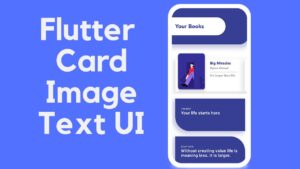Flutter初心者の学習記録 第16回:Flutter基本ウィジェット - TextとButton

こんにちは、Flutterエンジニアの皆さん!今回は、Flutterアプリ開発における最も基本的なウィジェットである「Text」と「Button」について詳しく解説します。これらのウィジェットはほぼすべてのアプリで使用されるため、しっかりと理解しておくことが重要です。
Textウィジェット
TextウィジェットはFlutterで最も基本的なウィジェットの一つであり、画面にテキストを表示するために使用されます。
基本的な使い方
Text('こんにちは、Flutter!')
このシンプルなコードで画面に「こんにちは、Flutter!」というテキストが表示されます。
テキストのスタイル設定
styleパラメータを使用することで、テキストの見た目をカスタマイズできます。
Text(
'スタイル付きテキスト',
style: TextStyle(
fontSize: 24.0,
fontWeight: FontWeight.bold,
color: Colors.blue,
fontFamily: 'Roboto',
),
)
テキストの配置
TextAlignプロパティを使って、テキストの配置を設定できます:
Text(
'中央に配置されたテキスト',
textAlign: TextAlign.center,
style: TextStyle(fontSize: 16.0),
)
配置オプションには以下があります:
TextAlign.left: 左揃え(デフォルト)TextAlign.center: 中央揃えTextAlign.right: 右揃えTextAlign.justify: 両端揃え
テキストのオーバーフロー処理
テキストが長すぎる場合の処理方法を指定できます:
Text(
'長いテキストが画面の幅を超える場合、このようにオーバーフロー処理を設定できます。',
overflow: TextOverflow.ellipsis,
maxLines: 2,
)
主なオーバーフローオプション:
TextOverflow.clip: テキストを切り取るTextOverflow.ellipsis: 末尾に「...」を表示TextOverflow.fade: テキストをフェードアウト
Buttonウィジェット
Flutterには様々な種類のボタンウィジェットがあります。ここでは主要なものを紹介します。
ElevatedButton
立体的な見た目のボタンで、マテリアルデザインに準拠しています。
ElevatedButton(
child: Text('押してください'),
onPressed: () {
// ボタンが押されたときの処理
print('ボタンが押されました');
},
)
TextButton
フラットなテキストボタンです。
TextButton(
child: Text('テキストボタン'),
onPressed: () {
// ボタンが押されたときの処理
},
)
OutlinedButton
枠線付きのボタンです。
OutlinedButton(
child: Text('枠線付きボタン'),
onPressed: () {
// ボタンが押されたときの処理
},
)
ボタンのカスタマイズ
スタイルを使用してボタンの見た目をカスタマイズできます:
ElevatedButton(
style: ElevatedButton.styleFrom(
backgroundColor: Colors.green,
foregroundColor: Colors.white,
padding: EdgeInsets.symmetric(horizontal: 20, vertical: 10),
shape: RoundedRectangleBorder(
borderRadius: BorderRadius.circular(20),
),
),
onPressed: () {
// ボタンが押されたときの処理
},
child: Text('カスタムボタン'),
)
ボタンを無効にする
onPressedパラメータにnullを設定することで、ボタンを無効状態にできます:
ElevatedButton(
onPressed: null, // ボタンが無効になります
child: Text('無効なボタン'),
)
実践的な例
以下は、TextとButtonウィジェットを組み合わせた簡単なカウンターアプリの例です:
import 'package:flutter/material.dart';
void main() {
runApp(MyApp());
}
class MyApp extends StatelessWidget {
@override
Widget build(BuildContext context) {
return MaterialApp(
title: 'テキストとボタンの例',
theme: ThemeData(
primarySwatch: Colors.blue,
),
home: CounterPage(),
);
}
}
class CounterPage extends StatefulWidget {
@override
_CounterPageState createState() => _CounterPageState();
}
class _CounterPageState extends State<CounterPage> {
int _counter = 0;
void _incrementCounter() {
setState(() {
_counter++;
});
}
@override
Widget build(BuildContext context) {
return Scaffold(
appBar: AppBar(
title: Text('カウンターアプリ'),
),
body: Center(
child: Column(
mainAxisAlignment: MainAxisAlignment.center,
children: <Widget>[
Text(
'ボタンを押した回数:',
style: TextStyle(fontSize: 18),
),
Text(
'$_counter',
style: TextStyle(
fontSize: 48,
fontWeight: FontWeight.bold,
color: Colors.blue,
),
),
SizedBox(height: 20),
Row(
mainAxisAlignment: MainAxisAlignment.center,
children: [
ElevatedButton(
onPressed: _incrementCounter,
child: Text('カウントアップ'),
),
SizedBox(width: 20),
ElevatedButton(
style: ElevatedButton.styleFrom(
backgroundColor: Colors.red,
),
onPressed: () {
setState(() {
_counter = 0;
});
},
child: Text('リセット'),
),
],
),
],
),
),
);
}
}
まとめ
今回は、Flutterの基本的なウィジェットである「Text」と「Button」について解説しました。これらのウィジェットはシンプルですが、適切に使いこなすことで魅力的なユーザーインターフェースを構築する基礎となります。
- Textウィジェット:テキストの表示に使用され、スタイル、配置、オーバーフロー処理などをカスタマイズできます。
- Buttonウィジェット:ユーザーの操作を受け付けるために使用され、ElevatedButton、TextButton、OutlinedButtonなど様々なスタイルがあります。
質問やコメントがありましたら、下のコメント欄にお気軽に投稿してください。みなさんのFlutter学習をサポートできることを嬉しく思います。
それでは、また次回お会いしましょう!

